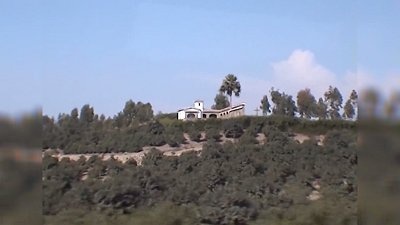I would expect that many people have this problem: Old videos - most probably from their own cameras (I do not suppose a person converting old cinema movies, but who knows) - are in low resolution, grainy and in the ratio of 4:3, so it is not exactly the most beautiful experience to watch them on modern television. I offer a tip how to improve your videos and how to convert them to HD 16:9.
The first step is yours - your videos must first get into the PC. It depends on whether you convert SD video from a DVD, an old camera (Mini DV, DV, Hi -8, Digital-8, etc.) or from a VHS tape. Once you have the video in your PC we can move on.
To convert your videos we will use two tools that are available for free. This is the well known VirtualDub - download here and also Avisynth - download here. Let's start with VirtualDub: Open the video (if necessary, you can insert more videos at once and append one to another, crop them etc.) and select Video - Filters to choose filters applied to the video. I recommend Deinterlace for deinterlacing, which on modern TV or PC players do not look good, and Smoother to smooth granularity. In the case of Smoother there is a risk that you will lose sharpness, but in my experience it is worth it. Loss of sharpness is not so significant. Alternatively, you can experiment a bit with the settings to get the best quality for you.
In Video - Compression choose the appropriate codec. I prefer Xvid Mpeg4, which offers a good compromise between size and quality of the resulting video. Save the video (File - Save as AVI) . The first step is over.

The possible result of converting video from 4:3 to 16:9 HD.And now the second step: We will convert the video to a ratio of 16:9. There are several possibilities: Actually, in the previous process, you can choose a filter to change the size (resolution) of the video, apply a sharpener etc. The problem with resizing - without cropping - is this: You will get the scenes distorted. But how to convert the video without distortions?
There are two possibilities: Either you crop the video to 16:9 format and then convert to HD resolution, or you somehow fill the empty black bars on the side of the video. In the first case, you lose a piece of the scene, which is a tax, you probably often do not want to pay. In addition, you lost some resolution.
But how to compute an image that does not exist? As long as the computers do not have the intelligence to be able to make intelligent recalculating the missing image, you have no choice but to improvise. There are also filters for VirtualDub that are trying to do this, but I did not like them, to be honest. Finally, I chose this solution:
I installed AviSynth, which is a frameserver software that has no GUI, but it is easy to create scripts that edit your video. You can upload some plugins (a number of them can be downloaded for free on the Internet) and make the necessary adjustments. I crop the last row of pixels from the right side of the video (my camera had a very noisy picture there), increase the size of image to 1280x720 pixels and smear it and then put the original image to the center of the new big one.
The script file conv.avs looks like this :
LoadPlugin("C:\Dokumenty\Install\AviSynth\variableblur.dll")
clip = AviSource("C:\Dokumenty\fotky\_videa_z_kazet\myvideo.avi").Crop(0, 0, 718, 576)
clipch=clip.BilinearResize(1000,740)
clipch2=clip.BilinearResize(1280,720).averageblur(radY=20,radC=20)
Overlay(clipch2, clipch, mode="blend", x=140, y=-10)
Change the myvideo.avi file - put there the name of your video file - and open conv.avs in VirtualDub. The result will be a picture 1280x720, ie HD video obtained from SD video with initially lower resolution, without losing any essential parts of the image. The effect of course depends on the type of scene. Take it, please, just as an example - perhaps after your experiments you come with a solution that will be better suitable for your purposes. I understand that not everybody likes the blurred streaks.
VirtualDub and AviSynth, thanks to a wealth of plug-ins, are really powerful tools for video editing. Sure you can argue that the above conversion to HD should instead take place in a single step (multiple recompression may worsen the quality of video), that the stripes on the side of video can be calculated more sensitively etc. Yes, definitely. Think of it just like of the experience of someone who has long searched in vain for some tips on the web and then created this basic solution. And for someone else it can be a starting point for further experiments.
Sure, thanks in advance for any ideas shared in comments.